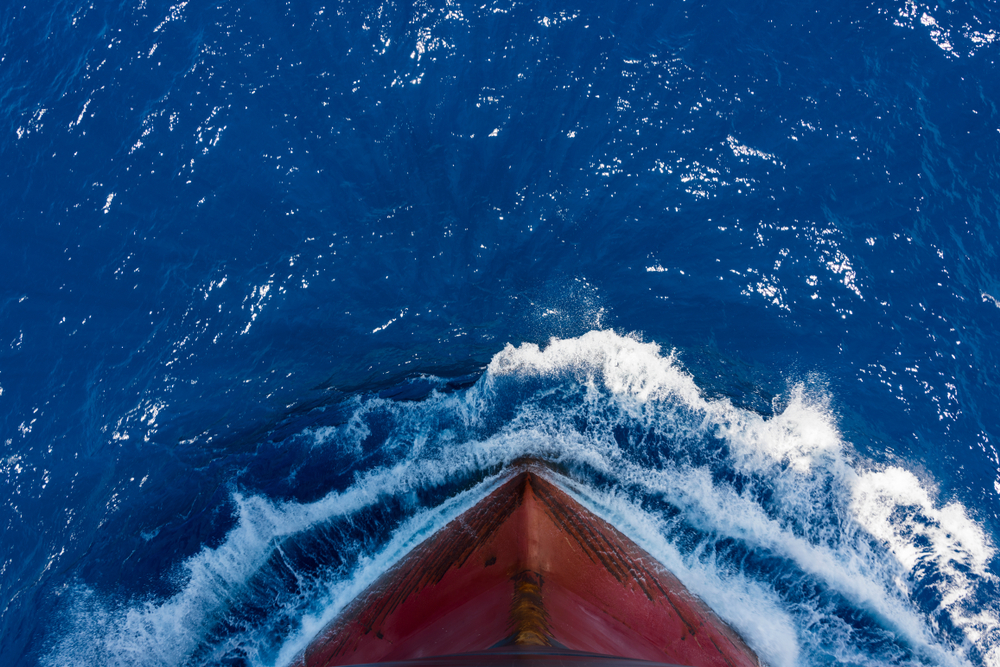Each year, the Port of Boston handles about 2.3 million metric tons of cargo, a diverse collection of goods ferried by ships largely guided by human decision-making. If Boston-based Sea Machines, Emerald’s latest portfolio company, gains traction, those mariners could have a powerful new tool to help them navigate the high seas.
Sea Machines builds autonomous command-and-control technology and computer vision perception systems. They have the potential to make shipping safer, greener and more efficient. For a sector responsible for transporting 90% of all goods, this represents a huge opportunity. In this interview, Emerald investment director Mehran Zaker explains shipping’s role in the global climate battle and why autonomy is a key lever for decarbonization.

Why focus on shipping as a sector in need of improvement?
Shipping is an unsung hero of the global economy. We’ve all seen recent headlines about drought affecting the Panama Canal and military tensions throttling shipping in the Red Sea. Issues like these remind people that a smooth and well-functioning maritime sector is not something we can take for granted. Before the pandemic, container ships carried goods worth nearly $20 trillion per year. Shipping is the lifeblood of commerce and there’s virtually no substitute for it as an engine of prosperity.
What are the main problems the shipping sector faces?
Shipping has been subject to many external shocks in recent years, from the covid-19 pandemic to the environmental and geopolitical flare-ups I mentioned. These are important on their own, but they also exacerbate longstanding concerns in several areas:
- Labor shortages: Covid was a major catalyst here, but the shipping workforce has been shrinking for a while, especially in rapidly ageing societies like Italy and Greece—both of which are traditionally strong maritime economies. Meanwhile, increasingly stringent technological and environmental standards are raising the stakes, as workers’ skills need to be sharper and more specialized.
- Safety and collision avoidance: Although ships can become targets of pirates or other malicious actors—as we’ve seen recently in the Red Sea—most shipping incidents are caused by human error. Although casualties declined between 2012 and 2021, the situation is tense and new disruptions could happen at any time.
- Greenhouse gas (GHG) emissions: Emissions from shipping have risen about 20% in the past decade and now constitute about 3% of the global total. A manifesto from the International Maritime Organization sees the sector achieving net-zero GHG emissions by 2050. Shipping has not typically been a major focus of governments’ decarbonization efforts, but that is changing; the EU, for one, included shipping in its emissions-trading system as of this month. Decarbonization is rising as a priority for regulators and other stakeholders and the sector will need a multi-pronged approach to go green.
How can autonomous shipping solutions, like those offered by Sea Machines, help in decarbonization efforts?
There’s only so much expertise a human navigator can lean on as they guide a ship around storms and other potential obstructions in their maritime journey. Robo-assistants like Sea Machines’ system leverage artificial intelligence-generated insights to suggest the best, most efficient route possible. They also help run the ship itself, helping it maintain optimal speeds and bearings for given conditions. All this adds up to significant fuel savings: as much as 10% compared to business-as-usual, according to one estimate.
Of course, the maritime sector will need a whole suite of solutions, many still in the testing phase, to truly go green. Green methanol, for instance, is a promising alternative to traditional liquid shipping fuel. But efficiency is a vital lever and mustn’t be overlooked in the climate battle.
